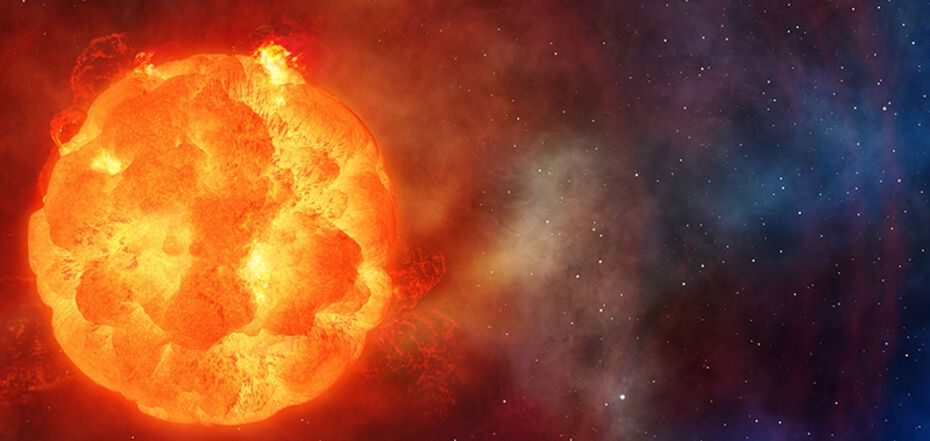Life
Earth's neighbour Betelgeuse has become 50% brighter in a week: could an explosion occur?
In recent weeks, astronomers have noticed that the red giant star Betelgeuse has dramatically increased its brightness by about 50%. Thus, it is going through another stage before collapsing into a supernova.
Astrophysicist Andrea Dupree explained whether we should prepare for a powerful spectacle and when it might happen.
The bright star Betelgeuse is perfectly visible from the Earth, as it is "only" about 650 light years away. It is located in the right shoulder of the constellation Orion. A sharp increase in its brightness has led to rumours among amateur astronomers that Betelgeuse may be on the verge of a supernova. But this is not entirely true.
As Dupree explains, Betelgeuse's recent strange behaviour is actually a sign that the star is returning to normal.
"The star will go supernova, but not in our lifetime," Dupree explained.
As Inverse writes, nuclear reactions deep in Betelgeuse's core are currently actively pushing helium atoms together to form carbon atoms. When the helium runs out, a new series of reactions will begin to turn the carbon into oxygen. Then the oxygen will turn into silicon, which in turn will turn into iron, and only this will indicate that Betelgeuse has finally run out of fuel for nuclear reactions.
At the same time, the star will lose the forces that keep its shape despite gravity and collapse inwards. That's when one of the most powerful explosions in the Universe, a supernova, will occur. But it is likely to take about 10,000 years.
Four years ago, Betelgeuse already attracted the interest of Earth's astronomers when the so-called great eclipse took place, which lasted through 2020. At the time, there were also rumours that the star was preparing to become a supernova. However, Dupree and her colleagues concluded that the eclipse was part of the giant star's usual restless activity.
It turned out that Betelgeuse ejected a cloud of gas and dust from its inner layer into space, which left a cool dark spot on its southern hemisphere, facing the Earth.
Scientists note that Betelgeuse has always been prone to oscillations. In ancient times, the star grew brighter and dimmed on a regular cycle of about 420 days. Betelgeuse's recent radiance may be part of the star's attempt to regain its balance after a large "stellar burp".
"The surface and interior of the star are trying to return to normal after a significant ejection of surface mass," Dupree explained.
She believes that the star will continue to behave erratically in the near future, but will soon return to more predictable behaviour.
"Our theoretical calculations show that the 400-day period should return in a year or two, but Betelgeuse may surprise us," Dupree said.
Earlier, OBOZREVATEL also reported that astronomers observed a powerful and impressive object, which they called "Scary Barbie".
Subscribe to OBOZREVATEL's Telegram and Viber channels to keep up with the latest news.




























